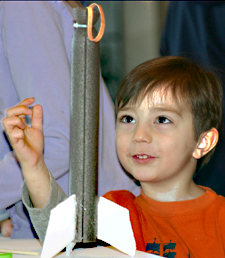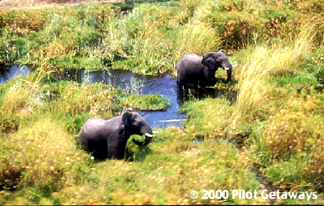
|
CONNECTIONS
|
IDAHO
ITD
HOME
IDAHO DMV
ITD
NEWS
HIGHWAY
SAFETY
IDAHO STATE
POLICE
TRAVEL SERVICES
STATE OF IDAHO
NATIONAL
AASHTO
AAMVA
AAA of IDAHO
FEDERAL HIGHWAYS
FEDERAL AVIATION
IDAHO STATE POLICE
NHTSA
NTSB
TRB
U.S. DOT
Idaho
Transportation
Department
Public Affairs Office
P.O. Box 7129
Boise, ID 83707
208.334.8005
Fax: 208.334.8563
Email




Aviation festival features sessions on ultralights, virtual aerial safari
A virtual safari, handmade flying contraptions and stories of Canada geese were among the highlights of the 14th annual Idaho Aviation Festival in Boise (March 10-12). The festival attracted an estimated 800 people.
Bill Lishman, noted filmmaker, pilot and author, returned to the festival in an encore performance. Lishman, best known for his work that inspired the feature film “Fly Away Home,” raised a flock of Canada geese, imprinted them to an ultralight aircraft he designed and built, and flew with the birds around Ontario, Canada.
Lishman’s work still involves ultralight aircraft, but now he is exploring how to put them to use for disaster relief. A current project designs an ultralight aircraft to carry up to 200 pounds of emergency supplies, which could be dropped to targeted areas by the low-flying aircraft.
 “I’ve
been thinking about it for seven years,” Lishman said. “It’s
a very decentralized delivery system, getting materials to people in
the first day after a disaster. Just think how it might have helped
after (hurricane) Katrina.”
“I’ve
been thinking about it for seven years,” Lishman said. “It’s
a very decentralized delivery system, getting materials to people in
the first day after a disaster. Just think how it might have helped
after (hurricane) Katrina.”
Because of their small size and light weight, ultralights could be pressed into service on short notice, and easily transported to a disaster site.
Price also makes ultralights practical for disaster relief. About 50 of the small planes cost about the same as one helicopter, Lishman said. The project is scheduled for testing this summer.
Another featured speaker, John Kounis, took a crowd of aviation enthusiasts on a virtual aviation safari across Africa. Kounis spent more than 100 hours crisscrossing the continent in a Cessna 172RG and Cessna 185.
“Flying around Africa is completely different from flying around the U.S.,” Kounis said. “It’s what the U.S. would have been like 150 years ago.”
Stretches of unpopulated, wide-open spaces with no power lines allowed Kounis to fly low and get a close-up view of wildlife and breathtaking scenery.'
His photo journey provided spectacular sights, and he shared stories of his travels along the way. For instance, just off the Sinai Peninsula, there are gorgeous reefs ideal for scuba diving and “loaded with colorful fish.” Flying from Sudan to Kenya, air travelers can look into a lush forest couched inside the vast caldron of a long-dormant volcano. And in the remote jungles of Tanzania, visitors are warned to watch for herds of hippopotamus in ponds or leopards in trees.
Kounis, editor of “Pilot Getaways” magazine, provided information about tropical weather conditions and flying procedures in those climates. He made similar presentations about touring Europe and the American Northwest by plane.
The festival
featured hands-on activity stations, where children assembled flying
contraptions powered by rubber bands and air pressure.
-----
Photos: Three-year-old Josh (above left) admires his handmade rocket. Sullivan, 3, launches his stomp rocket (above right) using the air pressure from an empty soda bottle. Coltin Talbot, 11, of Boise, takes the controls of a flight simulator (bottom left) in the Idaho Aviation Festival trade show.
Published 3-24-06